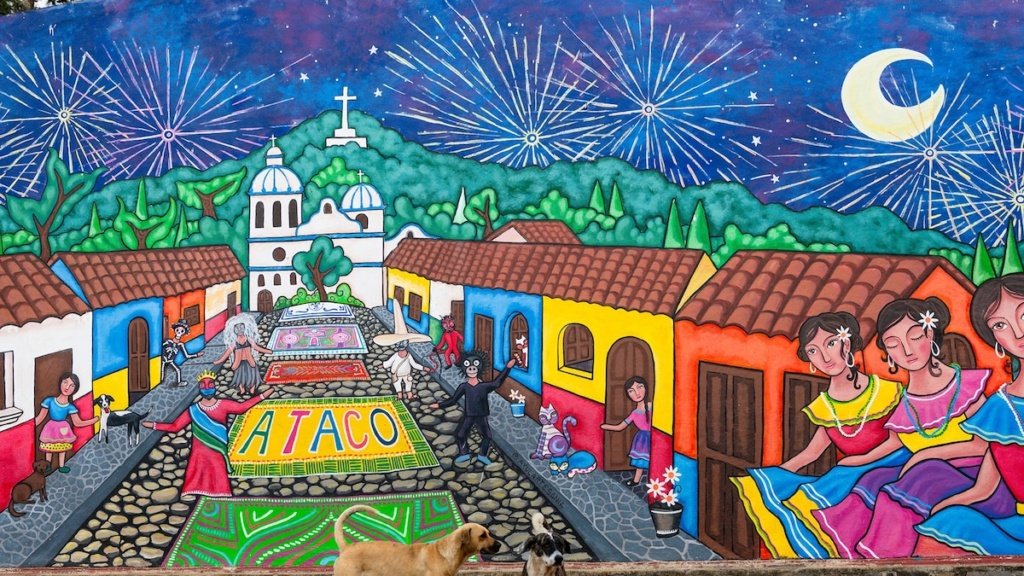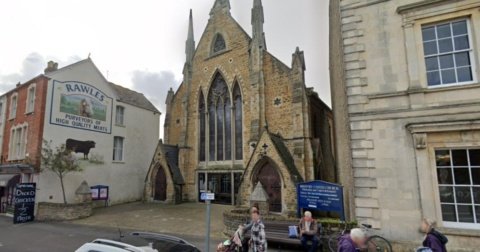On the peaceful back patio of craft shop Axul in the town of Ataco, Pedro Arévalo slips a thousand colourful strings deftly through his fingers. Working the woollen threads through his loom — at least 100 years old, he reckons — Pedro teases them into formation. The tread of his feet at the wooden contraption makes a noise like a herd of horses cantering down one of the sleepy town’s cobblestoned streets.
This is my first stop on the Ruta de las Flores or ‘flower route’, so-called because the road is fringed by wildflowers from November to February. Roughly 22 miles long, it trails through the viridescent highlands of central El Salvador and, over the course of a couple of days, I’ll visit some of the small towns it connects. Hugging the hillsides of Central America’s undulating interior, these quiet communities are full of sloping streets, lined by bougainvillea and shops touting colourful artisanal crafts. I’m here to meet the weavers and woodworkers, painters and chefs who have influenced the aesthetics — and tastes — of the entire nation.
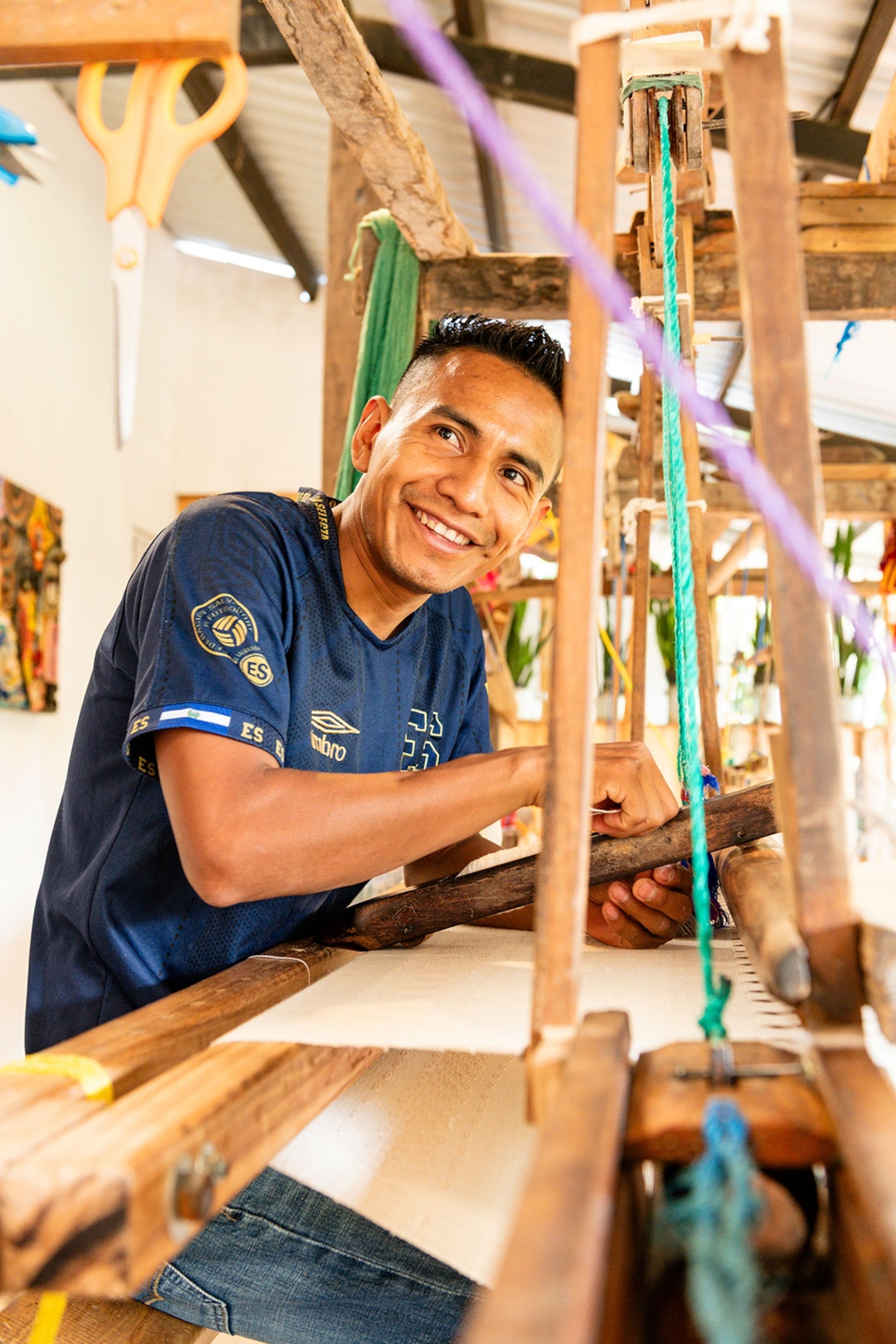
Pedro Arévalo is a weaver in the town of Ataco in El Salvador’s Apaneca-Ilamatepec mountain range. Photograph by Justin Foulkes
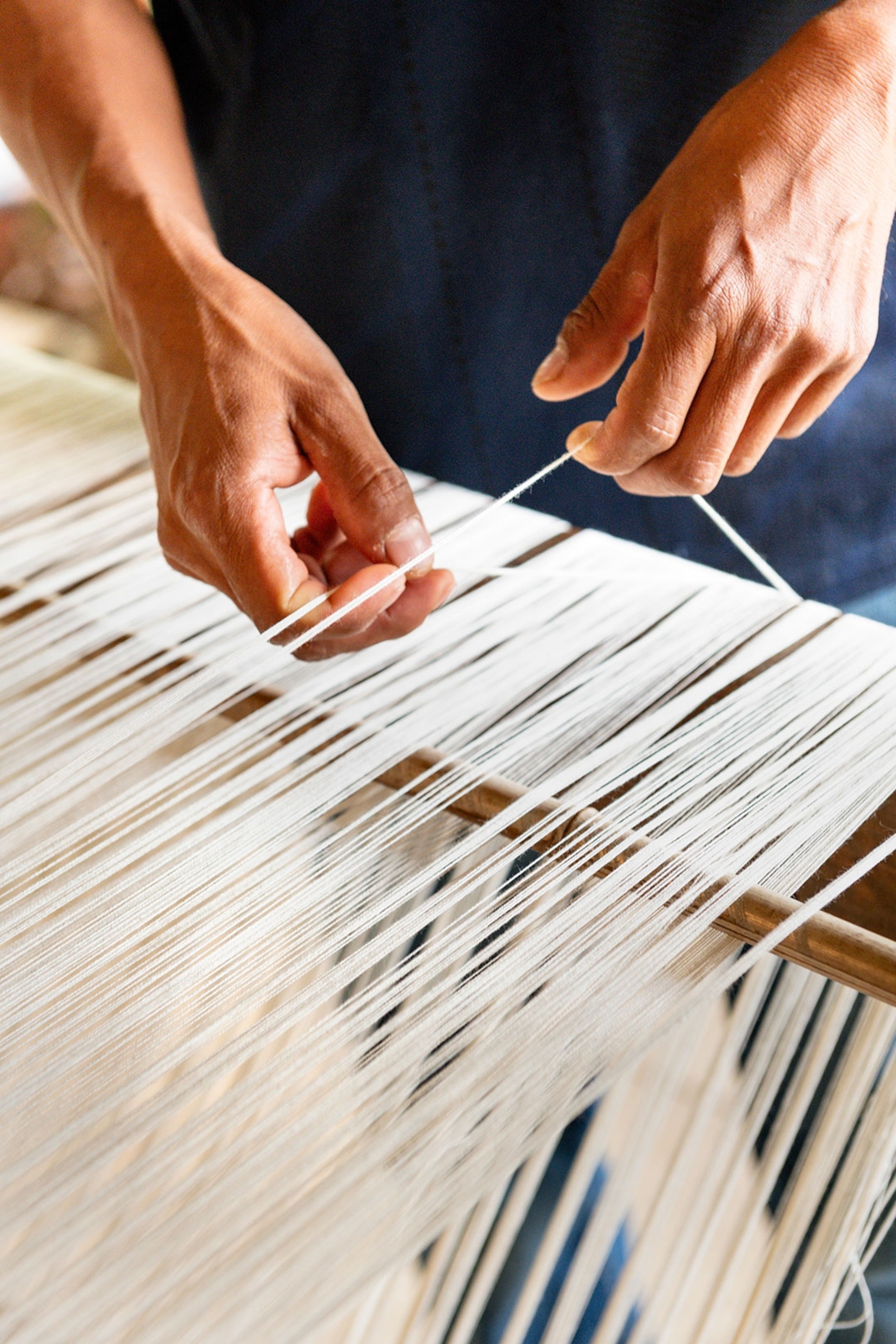
The wooden loom Pedro Arévalo uses to craft his woven creations is at least 100 years old. Photograph by Justin Foulkes
Leaving Pedro to continue plaiting patterns into his bright woven wares, I set out in search of coffee — the specialist crop of the Salvadorean highlands. Each town on this trail sits amid miles of the glossy-leaved plants and the spindling petals of their bright white flowers, flourishing in the fertile soil fed by countless volcanic eruptions. Beneath the vine-laced canopy of Ataco cafe Entre Nubes, coffee expert Carlos Chicos serves a seemingly endless stream of Salvadorean brews as he talks me through the region’s carefully cultivated microclimates.
“You should think of coffee like you do wine,” he explains, passing me my fourth mug in as many minutes. “You can grow the same grapes in Italy as you do in Chile, but you won’t make the same wine. The way the end product tastes is all about the climate it’s grown in.” The cool, shaded hills of central El Salvador lace each cup of local pacamara coffee with a dark chocolate undercurrent — you won’t find it anywhere else, as nothing grown on this Ataco farm is exported. “The best coffee in El Salvador should be for the people of El Salvador — and for our guests,” says Carlos, handing me a sample to sip.
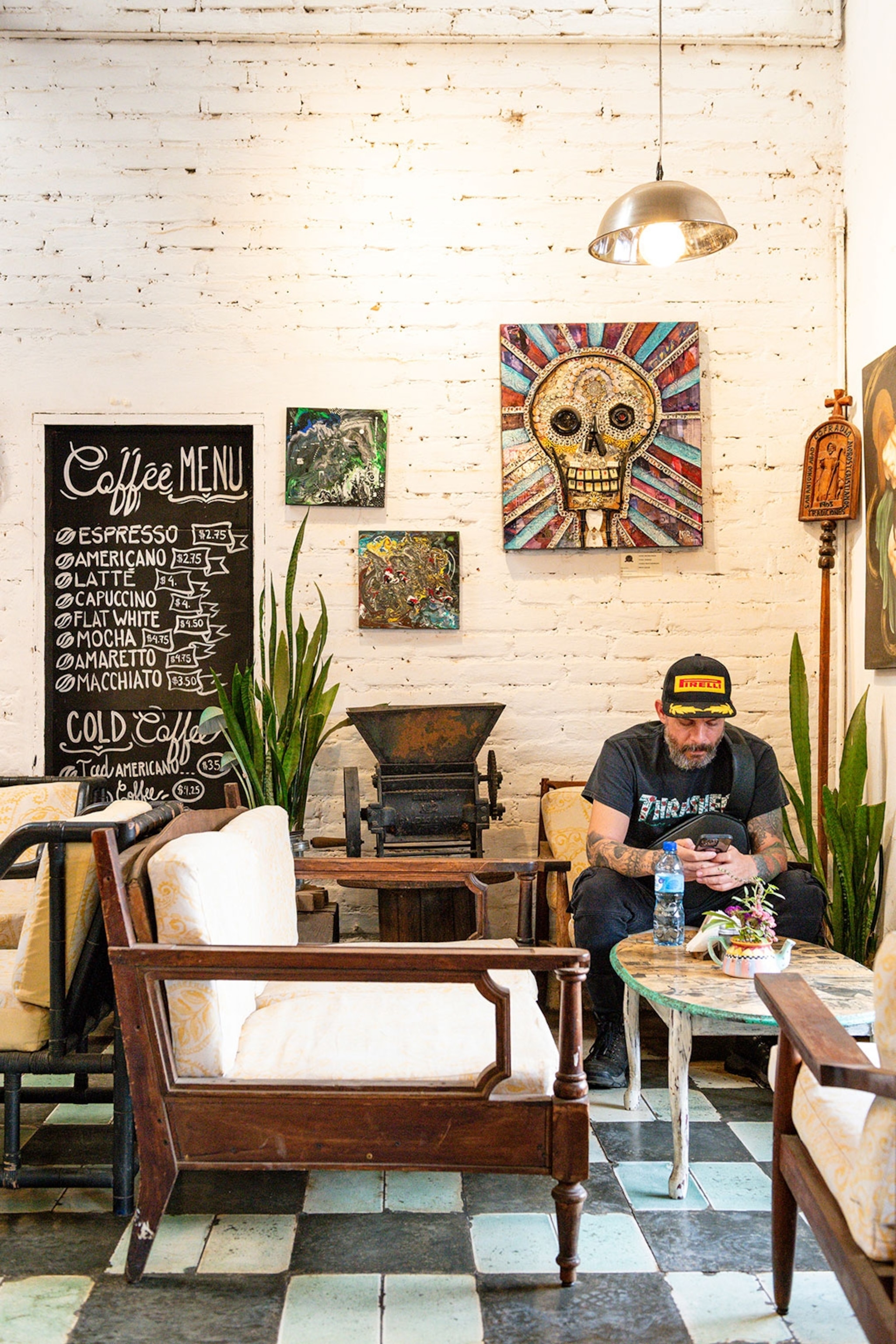
Carlos Chicos is an El Salvadorean coffee connoisseur at Entre Nubes cafe in Ataco. Photograph by Justin Foulkes
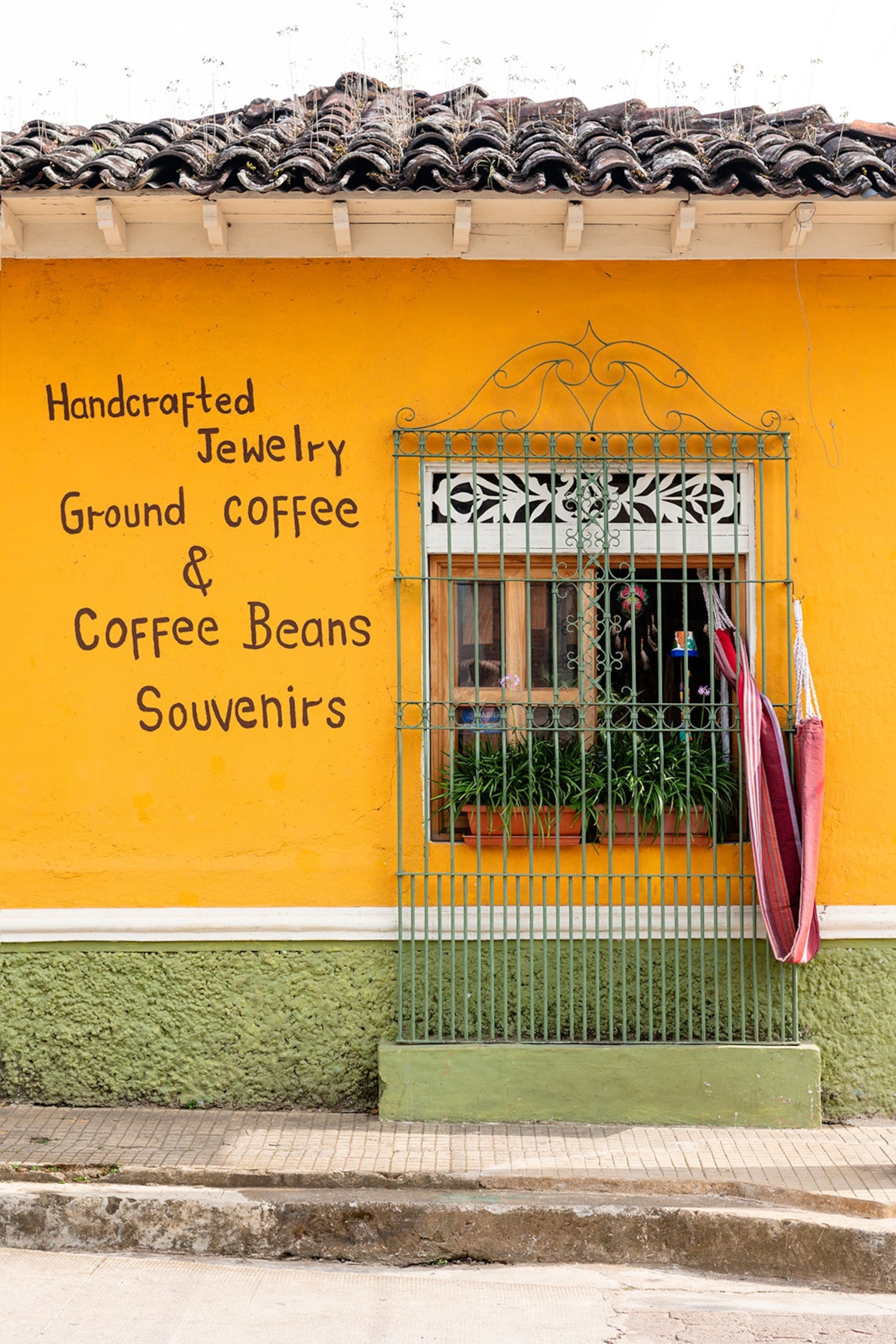
The colourful towns along the Ruta de las Flores are filled with talented artisans, artists and chefs. Photograph by Justin Foulkes
Spurred on by caffeine, I continue my drive, ascending to Apaneca between ivory izote flowers and scarlet salvia blooms. In the native Nahuatl tongue, the town’s name means “Where the winds and the rivers gust,” and a bracing air does seem to stream through its vertiginous streets, most bordered by stores selling hand-painted trinkets and bright, woven rugs. After dipping in and out of these unassuming shopfronts — built into stout, colonial-style homes — I linger awhile in a miniature gallery. Paintings of bucolic Salvadorean scenes hang floor-to-ceiling and chiselled statuettes gaze out from every shelf.
Daubing jewel tones on a canvas propped against the till is Ana Rivas de Rodas, who looks up to greet me into her eponymous store. “We have a lot of talent in this town,” she says, pulling out depictions of plantation fields and mountainside steeples. “But our artists work in the coffee farms, on construction sites. They’ve been sleeping.” Artistry is commonplace in Apaneca, she tells me, an inextricable part of highland heritage — in these peaceful and relatively isolated mountain communities, creativity is given space to thrive.
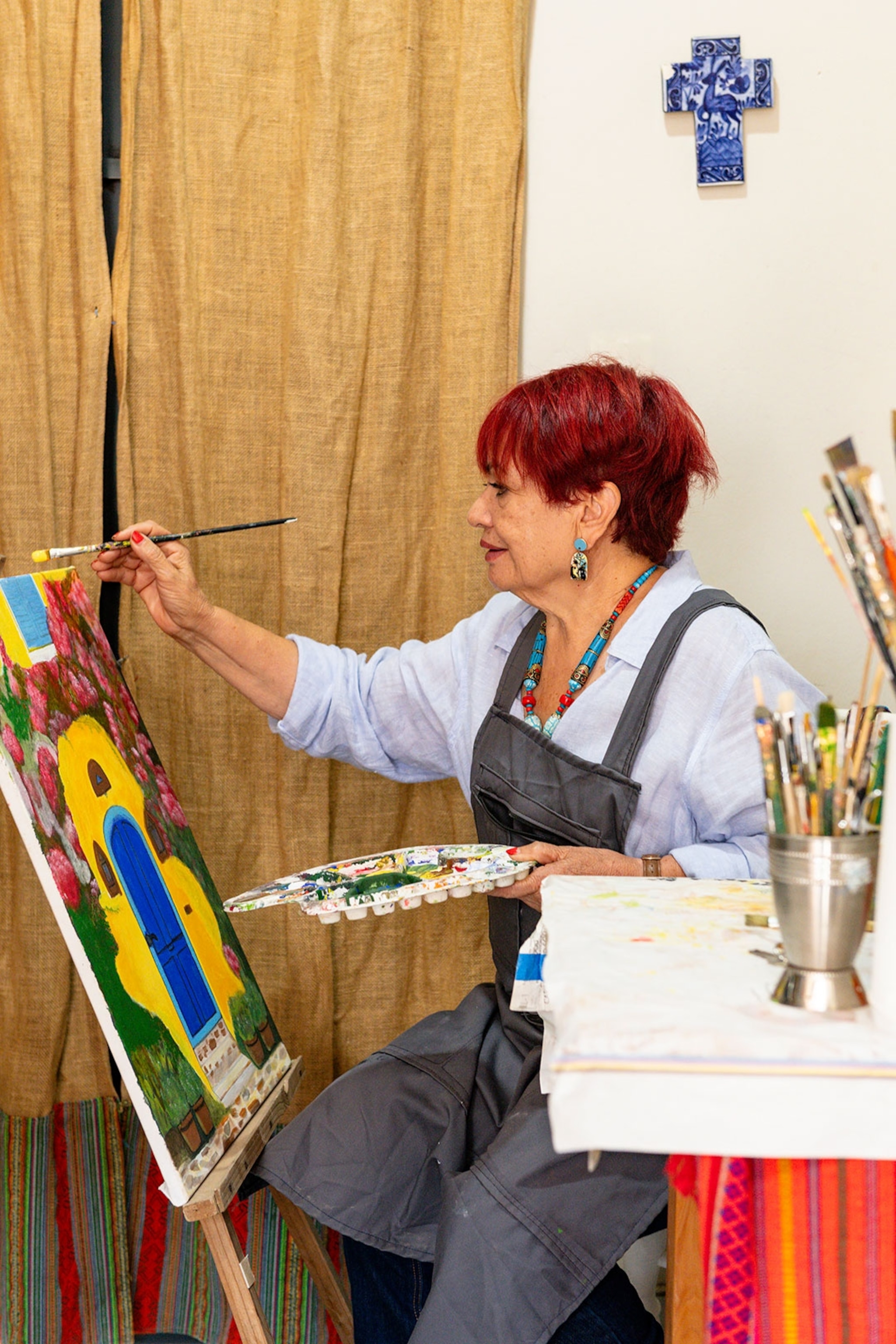
Apaneca’s stunning mountainside scenery inspires artist Ana Rivas de Rodas’ paintings. Photograph by Justin Foulkes
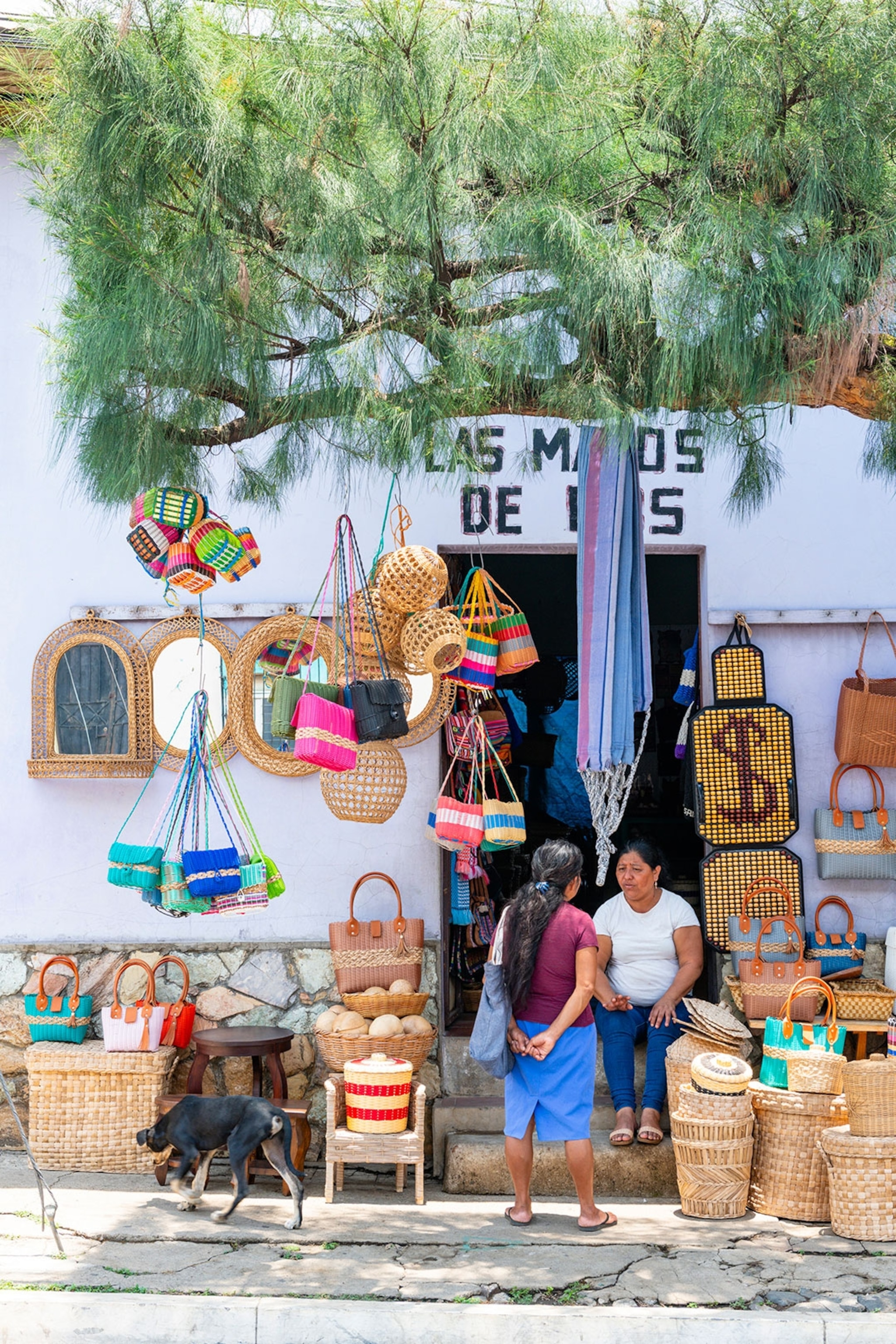
Find baskets handcrafted from woven tule reeds in the local stores in the town of Nahuizalco. Photograph by Justin Foulkes
I set my sights on the next town on the trail, with a quick pitstop at a lofty lookout to gaze out at the steaming volcanoes that stretch toward the skyline. In a little over 20 minutes, I’ve reached the outskirts of Nahuizalco, where the trees thin but the streets quickly fill. Most of the population of the small town seems to be working their way over wares stacked in baskets built from woven tule reeds. Except for the splayed-out tarpaulins, it’s a scene that’s been unfolding in Central America for centuries: heaped ears of life-sustaining corn, piles of fresh mangos, and hampers woven by the women of Nahuizalco since before even the Maya empire arrived.
I restrain myself from eating too many fresh market fruits — the final stop of my tour is a food festival in Juayua, and I want to arrive with an appetite. Ducking into the smoke-hazed side streets lined with stalls, I’m just one of the many culinary pilgrims who descend on this town each weekend. Dozens of people sit perched on plastic pews, tucking into platters of grilled corn pupusas stuffed with melted cheese. Most wash down each bite with a sip from a gigantic stein, stained scarlet by the residue of countless micheladas (a drink made with beer, lime juice and various chillies and spices). While waiting for my own order, a plate of salsa-doused tacos, I listen to the diners’ raucous toasts: they raise their glasses to their communities, to the mountains — and to the stall which serves cocktails in two-litre jugs.
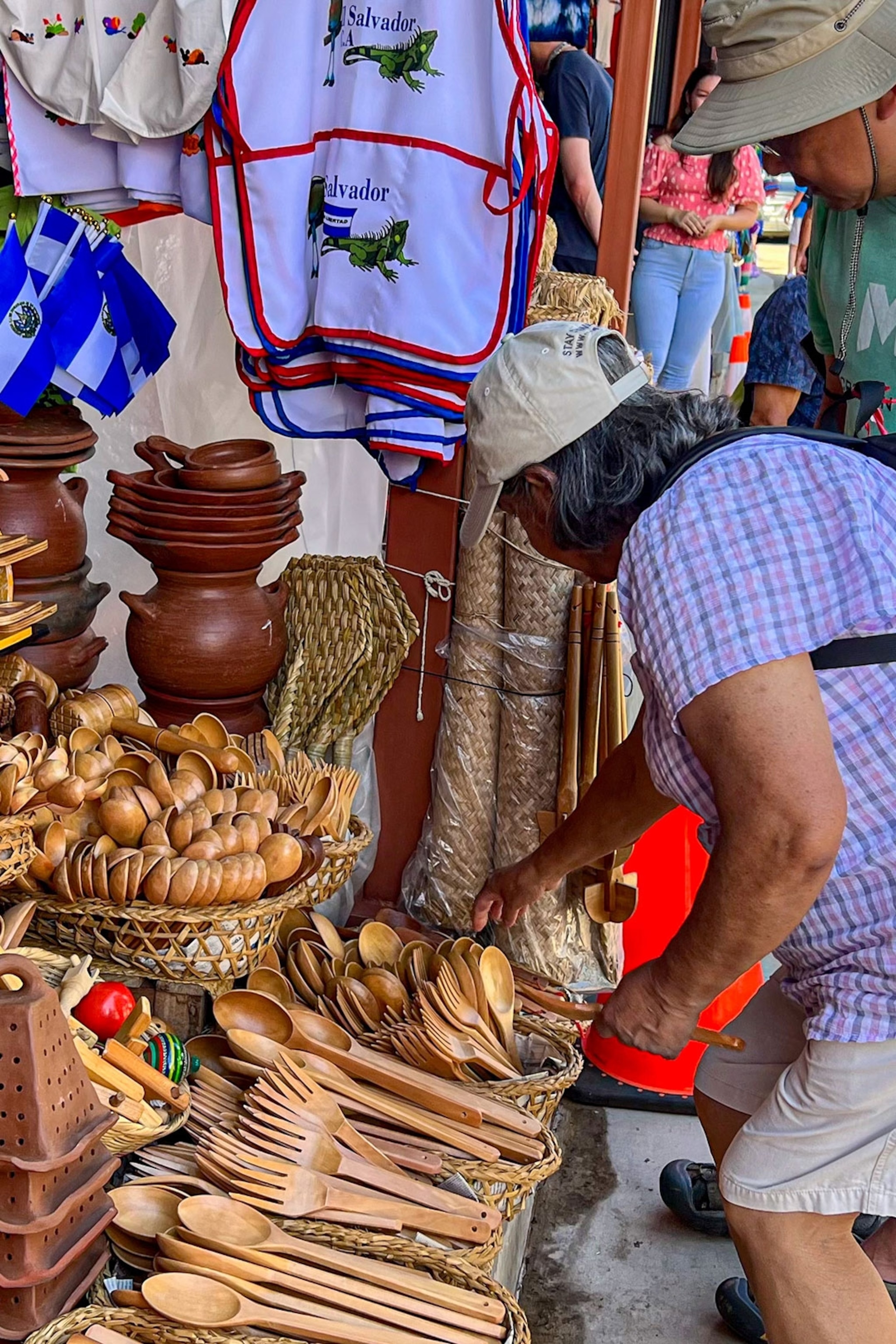
Nahuizalco’s central Night Market is one of the biggest attractions in the local area. Photograph by El Salvador Travel
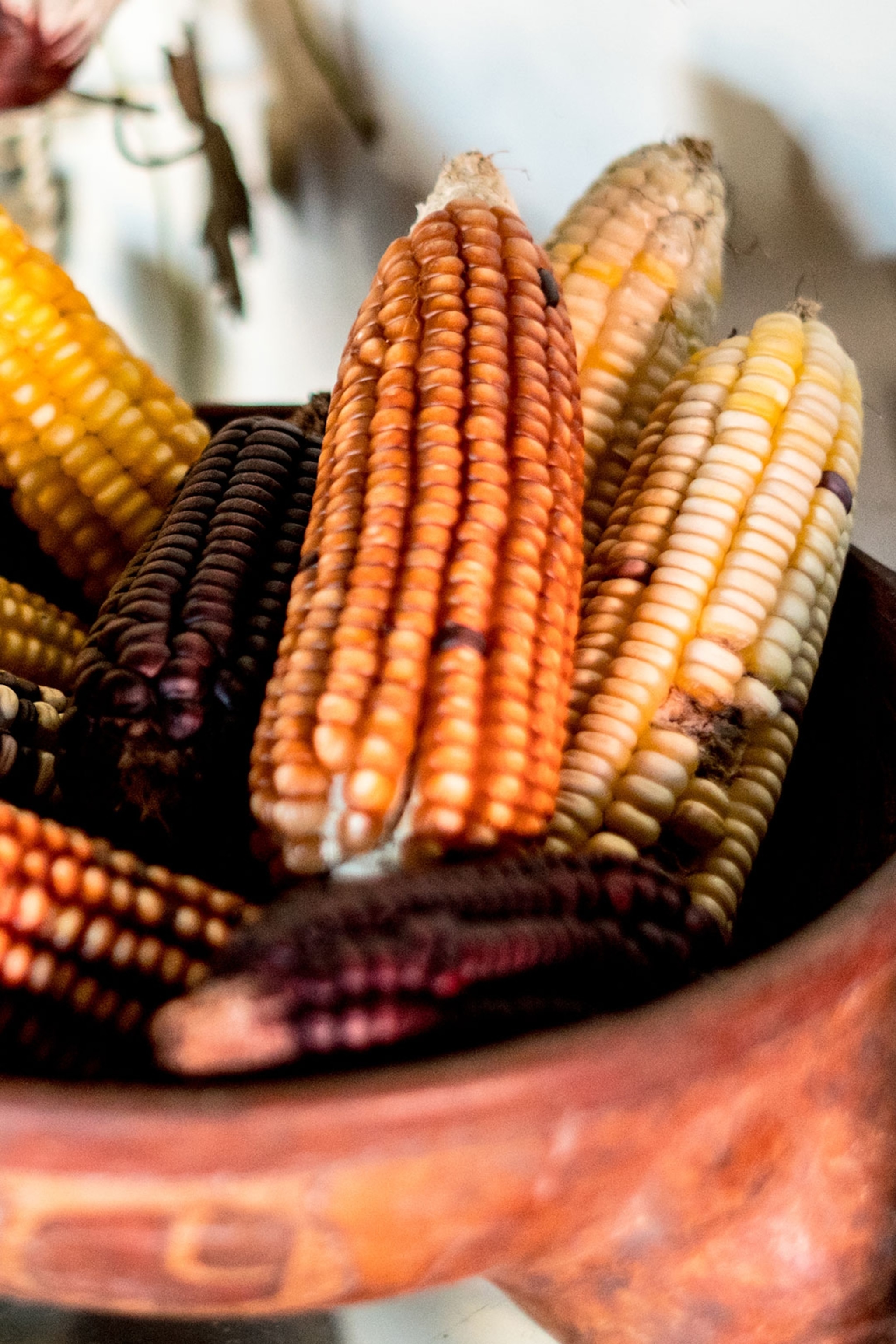
On the Ruta de las Flores, Nahuizalco is a town that stands out for its fresh, flavourful food. Photograph by El Salvador Travel
More Salvadorean snacks to try
Pupusas
Ubiquitous across El Salvador, these little flavour pockets are comprised of corn or rice flour that’s formed into a patty, stuffed with oozing cheese and tender meat and finished on the griddle.
Yuca con chicharrón
Deep fried yuca — the edible root of the cassava — paired with deep fried pork is a worthwhile lunchtime indulgence. Mix in the raw cabbage served on the side and douse it all in the tangy sauce.
Tamales salvadoreños
Using a banana leaf wrapper to contain the corn-based dough masa and other savoury ingredients — rather than a corn husk, as Mexicans do — El Salvador’s take on the tamale has an extra fruity flavour in its soft centre.
Plan your trip
To subscribe to National Geographic Traveller (UK) magazine click here (available in select countries only).

